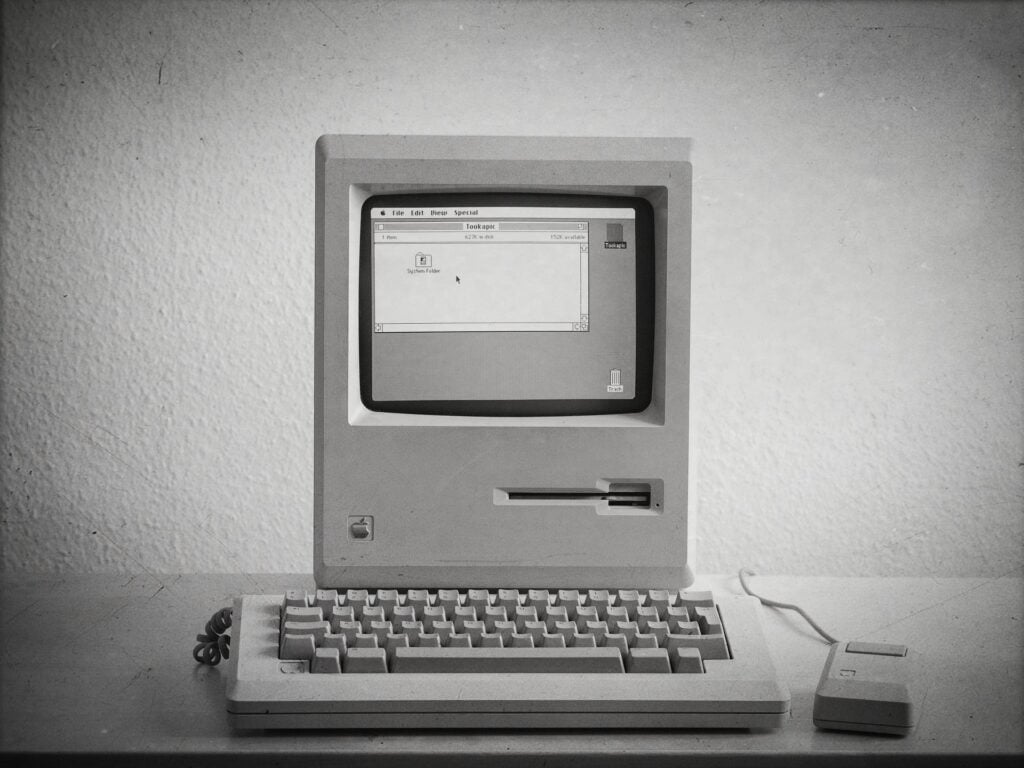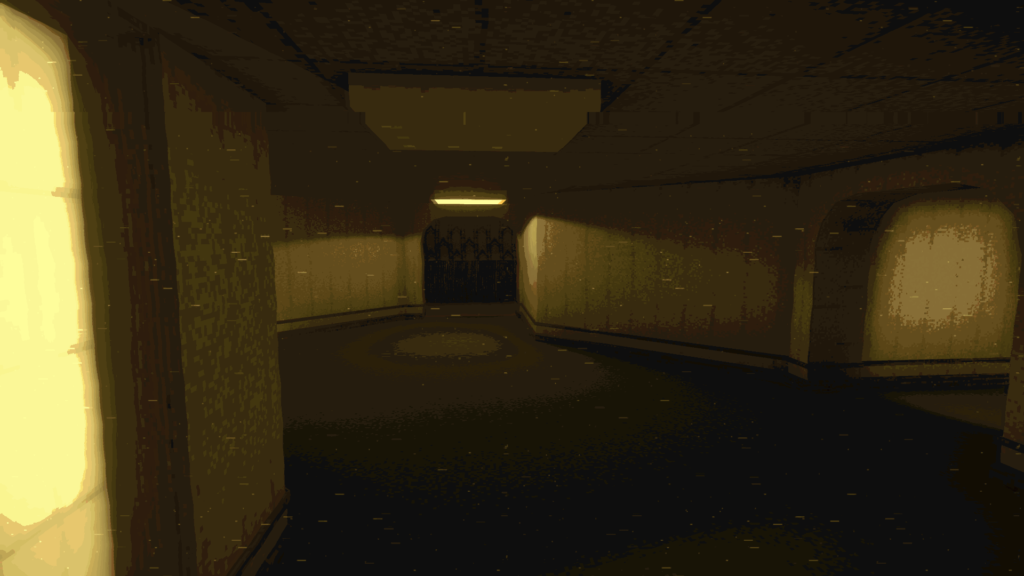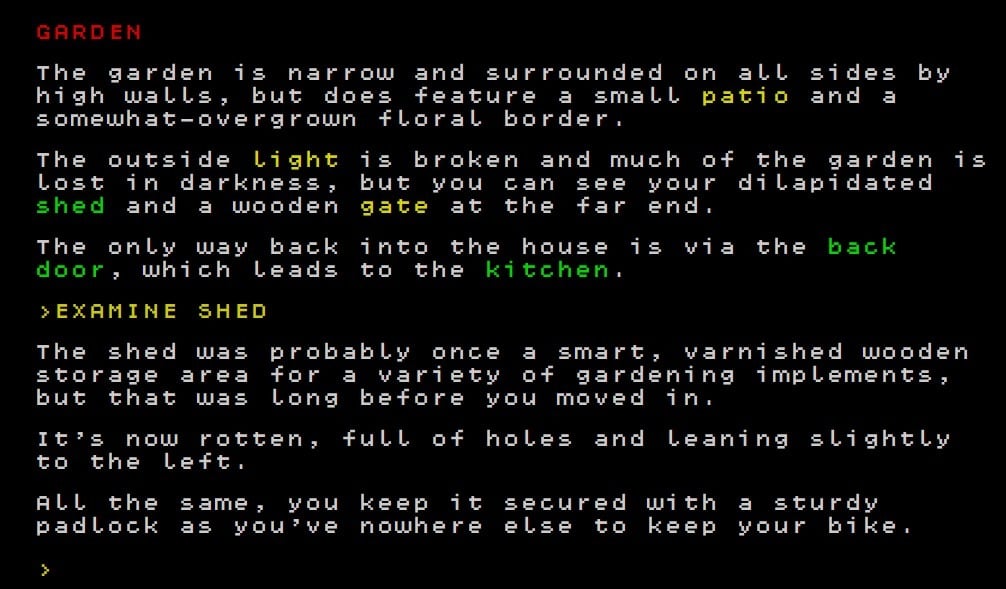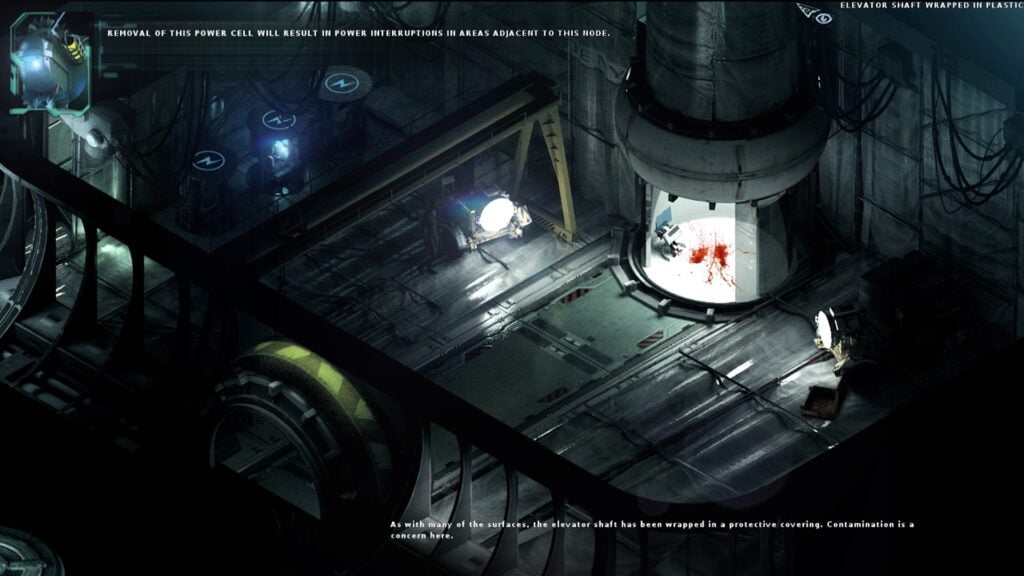Previously: Unconventional Indie Horror Video Games.
I’ve made no secret of my love of nostalgic horror, particularly when it comes to my gaming habits. Although there’s certainly something to be said for the photorealistic appeal of games like Until Dawn and Resident Evil 7, I just can’t help but feel that, more often than not, retro-style horror video games are that much more interesting — especially when they’re recent releases that hearken back to older eras, rather than games from those older eras themselves.

Why do these kinds of games do it for me in a way that more conventional titles don’t? I think it has something to do with an idea I’ve brought up time and time again here at TGIMM: For me, form matters as much as content does, and the cruder graphics and unconventional framing devices we see in so many video games designed to look like old games — even when they’re actually very new games — often deepen the storytelling for me in ways that stunningly rendered graphics may not.
[Like what you read? Check out Dangerous Games To Play In The Dark, available now!]
What “retro-style” means, though, varies — or at least, it does for our purposes here. Much of the time, the term refers to games that appear to have been made in a different era — the ‘90s PC point-and-click era; the late ‘90s/early 2000s PlayStation 1 era, aka the Silent Hill era; even the Atari era of the 1980s. Sometimes, though “retro-style” might refer more to the game’s story or plot inspiration than the actual look of the game. It might even, in some cases, refer to a feeling the game evokes.
It’s a loose term — but that, I think, just makes it even more interesting.
You may find a few games you would have expected to see in a roundup like this one absent here; in those cases, it might be because I’ve mentioned them in previous roundups and opted to stick with titles I haven’t covered before this time round. For what it’s worth, though, I do consider titles like, say, Slayaway Camp, Stories Untold, and pretty much every single RPG Maker horror game in this piece here to be perfectly at home in this category — these games I might classify as Horror Video Games That Look Old, But Aren’t. So, you can always head on over to some of TGIMM’s previous video game roundups for more titles that fit this general idea.
In the meantime, though, turn the lights down and the volume up. Here we go.
Simulacrum
Not to be confused with Simulacra by Kaigan Games, Prymordium’s Simulacrum puts you in the shoes of Abigail, a young woman who, after inheriting an apartment from her deceased mother, finds herself falling through a mysterious painting into a dark world full of monsters. As she attempts to find her way back home, she’ll also have to come to grips with her own past — a past which might be shrouded in more secrecy than she realizes. Prymordium notes that Simulacrum is “a horror adventure game inspired by classic survival horror such as Silent Hill and Resident Evil”; it’s an apt description, although it feels more like Silent Hill to me than Resident Evil. Either way, though, I’ve enjoyed what I’ve played so far — Chapter One was released in August and offers a couple hours of puzzle-solving gameplay.
Available on GameJolt. Currently it’s “set your own price,” which means you can get it for free; however, as the developer notes, it might eventually have to be set at a fixed price if it launches on other stores.
Lost In The Backrooms

Created by indie developer Jam for Itch.io’s Haunted PS1 Summer Spooks game jam, Lost In The Backrooms was inspired by the, uh… Backrooms. (Hence why you as the player character are lost in them in this game.) Stemming from an image of a yellow room with two similarly yellow corridors branching off of it posted to 4chan’s /x/ paranormal board in May of 2019, the Backrooms has become a favorite mythos of the internet; similarly to Slender Man before it, it’s sort of a collectively created tale of a strange, labyrinthine space that doesn’t behave as if it should. (In many ways, it reminds me of the House on Ash Tree Lane from House Of Leaves.)
Lost In The Backrooms deposits you into the titular Backrooms, rendered in grainy, PS1-style graphics. It’s not a long game — maybe 20 minutes — and you don’t really do much other than wander through masses of ever-changing corridors; even so, though, it inspires a terrific sense of unease. The sound design is A-plus, too. Overall, it’s a wonderful little project — a short story in video game form.
Available for free on Itch.io.
The 13th Doll
This one isn’t out quite yet — it’s scheduled for release on Oct. 1 — but since that’s, uh, pretty close, I think it’s worth including here. It’s even more notable for its lineage, too: It’s a fan-made but officially licensed sequel to The 7th Guest. Originally released in 1993, The 7th Guest was one of a number of excellent horror puzzle games that came out of the ‘90s point-and-click PC game era; it stands alongside Are You Afraid Of The Dark? The Tale Of Orpheo’s Curse and the Shivers series as both one of my favorite titles from that specific period, and of all time.
Having obtained the license for the property from original 7th Guest developer Trilobyte, Attic Door Productions successfully Kickstarted The 13th Doll in 2015; indeed, they surpassed their intended goal, raising more than $60,000 instead of the projected $40,000 to bring the game to life. It will follow Tad — the titular seventh guest from the original game — 10 years following the conclusion of his last tangle with the evil toymaker Henry Stauf; as a means of therapy, Tad’s doctor, Richmond, accompanies the young man back to Stauf’s decaying mansion in an effort to come to terms with the events he experienced. You can… probably guess how well that’s going to go. It’s available for pre-order now, with its official release coming on Oct. 1.
Available for $20-$30 at the game’s official website and on Steam.
The Works Of Puppet Combo
Indie developer Puppet Combo has the market cornered when it comes to vintage-esque, horror movie-inspired games, with titles like Babysitter Bloodbath offering PS 1-style graphics with storylines that feel like something straight out of an ‘80s slasher flick. The Glass Staircase — which departs slightly from Puppet Combo’s other work with a more Silent Hill-like, PS2-style look to it —has been particularly well-received; in April this year, Kotaku’s Heather Alexander praised it for the fact that it “gets why retro horror games worked” — what Alexander chalks up to a combination of understanding both the worth of and how to accomplish “a good slow burn,” and the game’s use of space in conjunction with a fixed camera perspective.
Puppet Combo also has a take on the Backrooms mythos in the works right now; according to the teaser’s YouTube description, it’ll be “a pretty different take on it.” I’m very much looking forward to finding out what that take is.
Available for $2.95 – $5.95 on Itch.io. You can also get access to all games and prototypes/works-in-progress by supporting Puppet Combo on Patreon.
Unhallowed

Blerkotronic Software describes itself as “a pretend software house producing funny little games for ageing hardware and/or fantasy consoles” — but although many of its projects are revamps of games like Minesweeper and Space Invaders, the developer released something a little different for Halloween in 2018: A text adventure game in the vein of the Zork series titled Unhallowed. It starts simply enough — you arrive home from work on Halloween, tired and hoping to order a pizza, only to have some… unusual events occur as soon as you walk into the door. Blerkotronic calls it “a classic text adventure game with a few twists to make it more palatable for modern players.”
Like most text adventure games, you have to make sure you get the terminology right while you’re playing; for example, you have to “examine” objects in order to learn more about them, not “look at” them. But I would argue that figure out exactly how to play a text adventure game is half the fun of the whole thing. Just, y’know… bear that in mind.
Available for free on Itch.io. To play it, download the HTML version, then drag the HTML file into an open tab in your internet browser of choice.
Paratopic
Are you a fan of 2012’s Thirty Flights Of Loving? How about the 2008 release Dear Esther? And lastly, do you also have a fondness for the blocky and slightly uncanny graphics of PS1 games? Then you’ll probably dig Jess Harvey, Doc Burford, and Chris I Brown’s Paratopic, which — like many of the games on this list — is often compared to the early Silent Hill games in terms of its aesthetics. The gameplay, however, is quite different; according to The Verge, it “fits loosely into the walking game genre,” a la Dear Esther, while Rock, Paper, Shotgun describes it as “a short first-person horror game which draws ideas from Thirty Flights Of Loving but takes them somewhere terrible, leading them down an alley and through an unmarked door into a world which looks a bit like ours but just isn’t right.”
About an hour in length, the game follows three characters — an “assassin [preparing] for her kill, a man… strong-armed into smuggling contraband VHS tapes over the border, and a young girl [who] finds the rusted remnants of illicit industry deep in a dark forest” — as you attempt to unravel exactly what’s going on in this strange, not-quite-right world. It’s… a trip, that’s for sure. (Also, note that the video embedded here is a full walk-through, so if you don’t want to be spoiled, you might want to avoid watching it.)
Available for $5.49 on Itch.io.
Faith, Chapters 1 And 2
The setup for developer Airdorf’s Faith series will sound familiar to anyone who’s familiar with the Satanic Panic of the 1980s: In 1986, two priests visited a family living in Connecticut to investigate a possible case of demonic possession. A year later, the survivor of that case’s failed exorcism has returned to the house in which it all went down to solve the whole thing once and for all. In addition to the overt Satanic Panic setting, it also smacks not only of the “real” story that inspired The Exorcist, but also the case that served as the basis for A Haunting In Connecticut — right down to the very year (the Snedeker’s case also occurred in 1986).
IGN reports that Airdorf’s goal was initial to “make a game that looks like Number Munchers but feels like P.T.” — and indeed, the fact that Faith’s story is so effectively told in Atari-era graphics is proof that you don’t need photorealistic imagery to scare the pants off of someone.
Available on Itchi.io, GameJolt, and Indie DB; you can name your own price for each of them, but generally, Chapter 1 can be acquired for free, while Chapter 2 requires shelling out at least $1. Each editions is slightly different, by the way, so… do with that what you will. Also check out The Wind, Airdorf’s game based on the 2019 film of the same name; it was commissioned by IFC Films and IFC Midnight and has a similar, pixel-style look combined with a feeling of sheer terror.
Dusk and Amid Evil
If retro horror first person shooters are more your jam, these two offerings from publisher New Blood Interactive should be right up your alley. Dusk, which was developed by David Szymanski, and Amid Evil, from development studio Indefatigable, both borrow heavily from FPS classics like Doom and Quake, although they each come in slightly different flavors. Dusk sees you fighting to contain some kind of Eldritch horror unearthed under a town in rural Pennsylvania, while Amid Evil is more… well, I’m not totally sure “fantasy horror” is accurate, but that’s about as close as I can get to what it really is, so… do with that what you will. Both of have been extremely well-received, though which one you’ll like better might depend on personal taste. You can’t really go wrong either way, though, so at least there’s that.
Available for $19.99 apiece on Steam or as a bundle including both games for $35.98. Both games are also being ported to the Nintendo Switch.
STASIS

I’ll admit that sci-fi horror — specifically space horror — never really quite does it for me in the way that more earthbound spooky tales do; although I do absolutely enjoy, say, Alien and System Shock, I tend not to get as excited about stories in those veins as I do a good haunted house tale. Even so, though, even I can’t deny that when space horror is done right, it’s enormously effective.
That’s where STASIS comes in. Like many of my favorite ‘90s-era horror games, it’s a point-and-click adventure; however, unlike The 7th Guest and its ilk, STASIS is an “in space, no one can hear you scream” kind of game. Released in 2015 by THE BROTHERHOOD, it casts you as John Maracheck, who awakens from stasis to an abandoned spacecraft (the Groomlake), a missing wife and daughter, and some, uh… things stalking him throughout the ship. The POV, however, is ultimately a bit more complicated than that: Wrote IGN at the time of the game’s release, “Much of the game’s story is told through crew members’ PDA entries and email logs, but amidst the escalating catastrophe and confusion on the Groomlake, everybody is a somewhat unreliable narrator, often with agendas of their own — and not all of them exactly according to official protocols — that necessarily influence their perception of ongoing events. Including John.”
Nothing aboard the Groomlake is as simple as it seems.
Available for $9.99 on Steam, Gog, and Humble or for $4.99 directly from the developer.
Daymare: 1998
Daymare: 1998 is an interesting case in the world of retro-style modern games: It doesn’t look retro — indeed, it was made in Unreal Engine 4, so rather than blocky, old school graphics, it’s got really, really realistic ones — but it’s meant to evoke the same kinds of mood that ‘90s-era horror first person shooters do, with improved controls for the modern gamer. So, if you count 1998’s Resident Evil 2 among your favorites, Daymare: 1998 is a new release you should absolutely think about checking out.
And no, the date that makes up the subtitle of Daymare isn’t an accident: The studio that developed it, Invader Studios, was originally hoping to release a fan-made reboot of Resident Evil 2 — which, again, was originally released in 1998.
In any event, Daymare is at once a good old-fashioned zombie shooter and a bit more complicated than that. The goal isn’t just to kill everything as fast as possible; you might only be presented with one enemy, but you have to figure out the right way to kill it. There’s puzzle-solving, resource management, and all sorts of other stuff at play here, which should provide the kick of adrenaline longtime Resident Evil fans know and love while also hiding a few new tricks up its sleeve.
Available on Steam.
First Winter
In 2017, developer Dan Sanderson created Pacific, a short-and-sweet little micro horror game — just 10 to 20 minutes in length — that surprised him by gaining a substantial following. He followed it up in 2018 with a full-length game with branching paths and multiple endings which also went on to achieve substantial acclaim.
That game is First Winter.
Set in 1982 (with graphics to match), First Winter is a Cold War horror story involving a Soviet submarine located off the coast of Los Angeles that may or may not be armed with nuclear weapons. It gets worse, though; the sub also… isn’t what it seems. As the game’s description puts it, “Seemingly trapped in a nightmarish reality of ever-changing worlds and environments, it’s up to you to figure out exactly what has happened on board the stricken submarine and to ultimately save the world from a nuclear catastrophe.” It’s meant to be played in one sitting, so strap yourself in.
Available for $1.80 – $3.99 on Steam, Itch.io, and GameJolt.
World Of Horror
World Of Horror isn’t out yet — it’s supposedly getting released sometime in 2019, although it’s not yet clear when — but, folks? I can’t wait. Inspired in equal parts by both the works of Junji Ito and those of H.P. Lovecraft, World Of Horror takes place in during a chaotic apocalypse as the Old Gods reawaken and “claw their way” ashore in a small town on the coast of Japan. Reality is failing, and the end does, in fact, seem to be nigh. The game features branching storylines, five playable characters, turn-based combat, and “unforgiving choices”—and although Gita Jackson Kotaku praised both the writing and the music of an early demo, she also noted that “the real hero of this game” is the “dithered, black and white Apple II-esque graphics.” Wrote Jackson, “The sleazy seems… even sleazier when it’s rendered as if you found it on an illicit floppy disk, and the horrible that much more horrible.”
The demo is currently playable at World Of Horror’s website. Here’s hoping the full game arrives soon.
Not yet released; will be available for the Nintendo Switch, PS 4, and on Steam.
Got any other titles to add? Post ’em in the comments!
***
Follow The Ghost In My Machine on Twitter @GhostMachine13 and on Facebook @TheGhostInMyMachine. And don’t forget to check out Dangerous Games To Play In The Dark, available now from Chronicle Books!
[Photos via StockSnap/Pixabay, remixed by Lucia Peters; Jam, Blerkotronic Software/Itch.io; The Brotherhood Games]